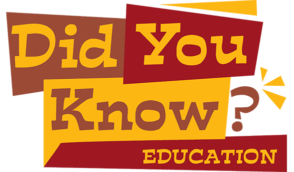His grandfather helped William Booth found the Salvation Army and helped Hudson Taylor start the famous China Inland Mission.
His mother Mary spent time working as a missionary in China with Hudson Taylor and with the Reverend George Brown in Papua New Guinea.
With such a Christian heritage, it’s not surprising that when Frederick and Mary Fysh’s first son was born, he was named Hudson after the very well-known missionary pioneer to China, Hudson Taylor.
Hudson Fysh was born in 1895 in Launceston, Tasmania, the oldest of five siblings. His childhood was made difficult by the failure of his parents’ marriage and his father’s business. Originally Hudson stayed with his father, but he ran away so often that eventually he was allowed to stay with his mother.
Yet in spite of this troubled start to life, he became Sir Hudson Fysh, founder of the Australian airline Qantas.
(Picture: Lieutenant Hudson Fysh of No. 1 Squadron AFC, standing with his Nieuport Scout aircraft. https://www.awm.gov.au/collection/P00342.001)
Fysh attended various schools including Launceston Grammar School and Geelong Church of England Grammar School. He did not achieve very good results at school, but he tried to make up for this. He read a lot of books, studied economics and took a course in ‘Pelmanism’ (memory training). After leaving school he became a jackaroo and worked in the wool industry.
When World War I broke out, Fysh enlisted as a trooper in the 3rd Regiment of the 1st Australian Light Horse Brigade. He served at Gallipoli, and in Egypt and Palestine. He was commissioned Lieutenant in 1916 in the brigade’s machine-gun squadron before transferring to the Australian Flying Corps where he was a gunner.
In 1918 he was heavily involved in attacks against German and Turkish aircraft, airfields and ground troops. He shot or forced down a number of enemy aircraft, including two that were destroyed on one day. He was awarded the Distinguished Flying Cross in 1919. Before returning to Australia, Fysh qualified as a pilot.
Fysh saw the potential in aviation as transport of the future. With some partners, he purchased mainly war disposals aircraft (aircraft that had been used in the war) and formed Queensland and Northern Territory Aerial Services (QANTAS) Ltd in 1920.
Fysh was a shy, quiet man, but he was also a very focused businessman who had high and strict expectations of his employees. He became Managing Director of QANTAS in 1923, and also remained a regular company pilot until 1930, when the company registered its first million miles (1.61 million km) and moved its head office to Brisbane.
No doubt the legacy of Fysh’s grandfather and mother’s Christian missionary work had a significant effect on his outlook on life. Fysh’s friendship with the Reverend John Flynn demonstrated this fact.
Flynn had a vision to start a flying doctor service for people in remote areas of Australia. QANTAS provided a De Havilland 50 aircraft, the first machine available and suitable for aerial medical work. This was a refurbished war plane especially fitted out to carry a stretcher, a doctor and the pilot.
On 17 May 1928, the first call for help from the Aerial Medical Service was responded to by Victory. (This service would later be called the Royal Flying Doctor Service.)
What motivated these two men to carry out this work?
Flynn’s motto was ‘For Christ and the Continent’. Together, and motivated by God’s love, the two men were able to bring help to people in remote places who needed medical assistance. The relationship between Fysh and Flynn was instrumental in the growth of outback Australia.
In April 1931, Fysh flew the Brisbane–Darwin section of an experimental airmail service between Australia and England. In 1933, as a passenger in the British Imperial Airways monoplane Astraea, he made a survey of the route to Karachi in Pakistan, and on 18 January 1934, QANTAS, in partnership with British Imperial Airways, entered the world of international air travel as Qantas Empire Airways Ltd (QEA) was founded with Fysh as Managing Director.
Over the next few years, Fysh would oversee QEA flying the airmail route between Australia and England, move his headquarters to Sydney, and help establish the first air service to New Zealand.
During World War II, Qantas, under Fysh’s guidance, assisted the war effort. This included flying long routes, taking troops and equipment to New Guinea and bringing home casualties. In 1947 the Commonwealth government bought the company, but Fysh remained as Managing Director. He was still Chairman until 1966, by which time the company had become established as one of the world’s leading airlines.
Sir Hudson Fysh died on 6 April 1974, aged seventy-nine. He was survived by his wife Elizabeth, a son and a daughter. Now Qantas Airways Limited, with its famous white kangaroo in a red triangle, is the largest and busiest airline in Australia, and its founder leaves behind a legacy of helping others while he was busy pioneering a new form of travel.
Resources and further reading
https://www.awm.gov.au/visit/exhibitions/fiftyaustralians/19
http://adb.anu.edu.au/biography/fysh-sir-wilmot-hudson-6263
http://www.flyingdoctor.org.au
